One thing we surely agree with is that hammock camping is quite a fascinating and mind-blowing activity, until you flip over or it slides because of the poorly secured knots. Hammocks, especially those suspended high enough, can subject you to injuries whereby you may fall, if not tightly secured. Although there is no standardization of how the best knots for hammock should be made, there are some effective tips on how to master that.
Hammocks are the best tools for all the outdoor hobbyists because their benefits outweigh those of the camping tents. So, knowing your way around these essential relaxation tools is of paramount importance because the proper setup prevents the safety risks. You need to know how to set them up, tie the best knots, and hang them on a tree.
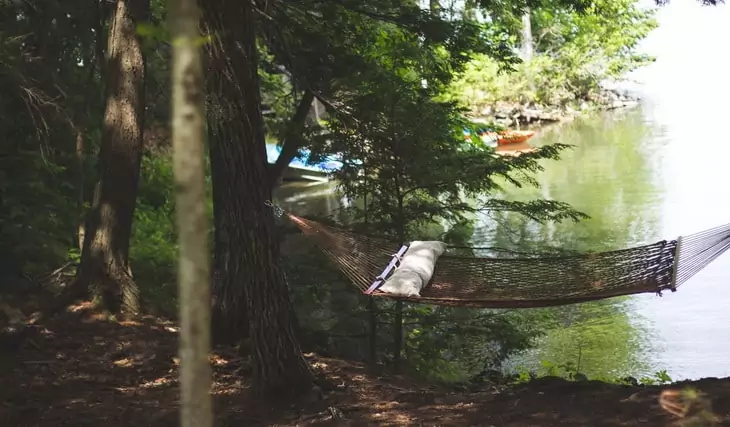
To prevent the imminent risks of hammocks falling off the trees or hurting you, we have provided a comprehensive guide on how to set up a hammock. The guide emphasizes the best knots for the hammock that how to emerge victorious in your quest to set up a hammock. Anyone can excel in setting up the hammock.
Where to set up the hammock?
Firstly, you have to figure out where you are going to set up your hammock. Fortunately, it can be used almost anywhere provided there are anchor points. Some hang them between poles or trees. Unlike the selective and restrictive tents, hammocks are can be set up almost anywhere provided their supporting structures are sturdy enough and well-spaced at least 5 meters. With this in mind, check out the trees if they are not dead or about to die. Dead trees could pose danger to you should the strong winds occur because they might break and fall on you.
You must anticipate such dangers when using the hammock. You can suspend hammocks on a number of supporting structures, including using one tree only by using the spreading bars. The rope has to be fastened tightly on each end to support your weight or that one of your partner even though it is not encouraging for two people to use the hammocks at a time. When setting up your hammock on trees, ensure that they are spaced between 4 to 5 meters apart. The ropes are often included in your package.
All you need, are the means to fasten them, such as the straps, carabiners and hooks. Beware of the terrain over which you set your tool on because, if you set it up over rocky surfaces and then it happens that you fall accidentally, you may get injured so prevent that.

Other considerations include hanging the hammock to at most your height level and its base should be at chair level. Hanging it too high might subject you to the dangers of losing balance and then getting injured.
How to set up the hammock
Once you have found the strong trees on which you will set up the hammock, it’s now time to get the work done by first securing the straps whereon you will tie the rope. Even the carabiner can be used to attach the rope to the straps. Or even better, the loops can come to your rescue with an easy setup.
You can get the tarp just to stay ready should it rain. The hammock can be suspended under the tarp while still hanging on the preferred positions on the trees. The tarp will also protect you against the strong winds.
For a video tutorial on how to setup hammock, we recommend watching this video https://www.youtube.com/watch?v=R-A265qrsuA. It will show you the easiest way visually than a verbal way of directing you.
Hanging the hammock
Hanging the hammock is the main task at hand. Here you need the best knots that can secure it to the supporting trees so it doesn’t slide down when sleeping on it. There are static and adjustable knots that you can choose from. Usually, the static knots are ideal for heavy loads whereas the adjustable ones are for the lighter loads.
And for the record, there are many types of knots that you can customize your hammock with. We have only mentioned a few yet the best among them. Sometimes it’s all about trial and error when making the knots. For instance, you can use a specific knot and then put the heavy gear on the hammock to see if it can withstand that with the knot tied.
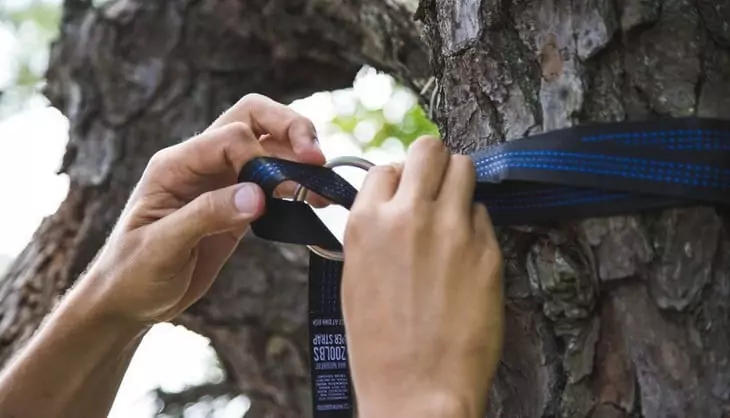
Our first one on how to hang up a hammock is the Backpacker Hitch, which you can tie by wrapping the rope around the tree multiple times and then create some loops to tie in tightly. It will fasten the hammock and prevent it from sliding. here is also the Bowline, which you have to wrap its working around the tree more than twice. Further instructions and some knots are given below:
Bowline Knot
Bowline knot is one of the popular hammock knots. It was used by the sailors in attaching the sail to the front of their boats. The knot is quite versatile and can be used in many applications. So using it on your hammock gives you the guarantee that you are safe. Its loop is more secure and can be adjusted to any desired size and is not affected by tension. And this loop can be secured with ease on a tree.
Instructions:
- Create a loop near the end of your hammock rope
- Insert the longer end of the rope through the loop
- Then pass that longer end around the start of the rope from right to left
- Insert it down into the new loop and fasten it
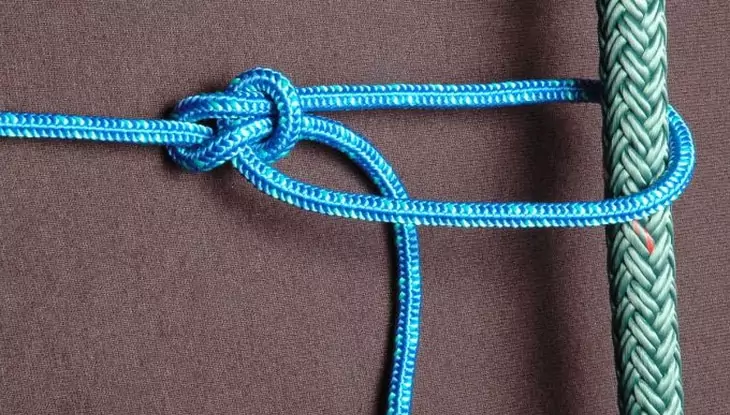
Becket Hitch
Becket Hitch is also a great knot to tighten your hammock on a tree. It’s been in existence for a long time to an extent that local users in South America just refer to it as the “hammock knot”. It is also a great way to connect the suspension to the anchor pole. No experience whatsoever in mastering this knot. Even a beginner can easily secure the hammock using it.
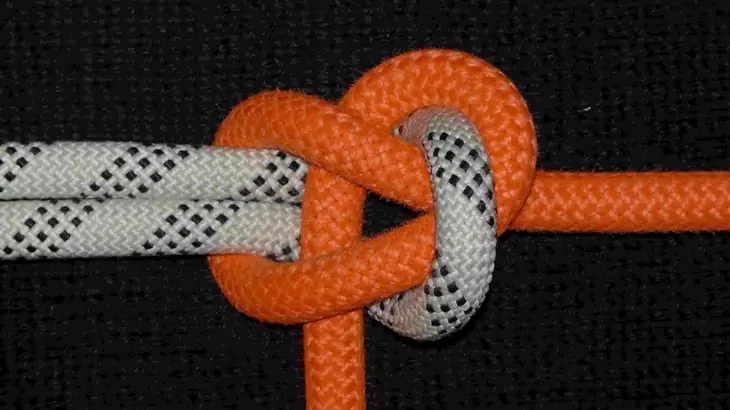
For better results with the Becket Hitch, you can tie it with the webbing or the hammock rope depending on the configurations of your hammock. Keep in mind that the rope can also damage the tree, unless you do not care about that tree and do not intend to revisit it. The webbing strap, on the other hand, protects the tree and secures the hammock well.
Two half pitch
It is also a great knot to secure your hammock to the anchor point. It is often used to secure clothesline, secure tools and hang the hammock to poles or trees. See the instructions below on how to tighten the hammock using this knot.
Instructions:
- Create a loop around the anchor point and then wrap the shorter end of the hammock rope around the longer end.
- Then pass the end of the rope through the loop and pull it to make a hitch
- Repeat the loop underneath the first half to make another half hitch
- Then secure it
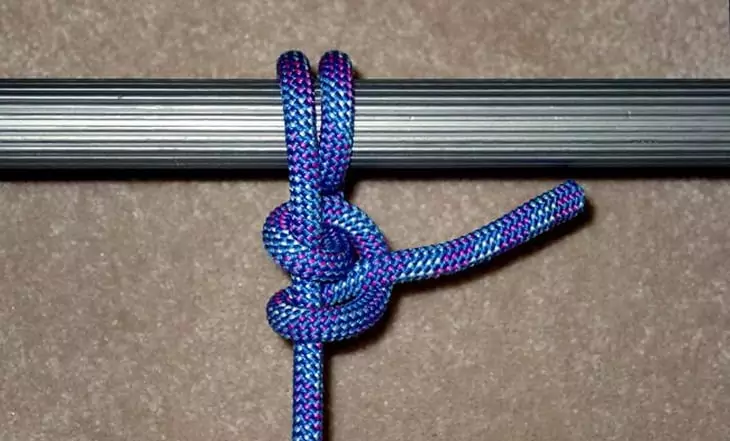
Water knot
Water knot is also a great way to secure your hammock. Hang the hammock using the slings wrapped around the tree at least twice, then subsequently tie with the water knot. It is easy to adjust this knot and it fastens the hammock well to prevent it from sliding.
Ideally, there are plenty of knots that one can customize. For the inexperienced is the fear of falling off the hammock because of poor knots. For some video tips on how to tie a hammock to a tree, watch this https://www.youtube.com/watch?v=6013xBV4Ghg to get a glimpse on how to secure your hammock.
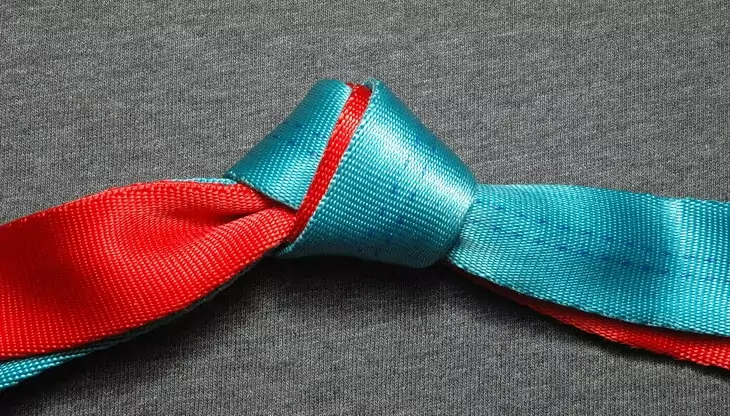
As we’ve already mentioned, there is no standardization on how one should form the perfect knots. Most of the knots are what others have tried many times using trial and error techniques. The idea is not to secure the knot to an extent that it may be difficult to remove your hammock after camping. We want quick release knots.
And there are hammock hanging techniques as well that can be helpful to you. You can hang it using the Swiss Style whereby you can rock back and forth using the two anchor points on a tree. The other technique is hanging it with the spread bar that allows you to turn and rotate at an angle of 360 degrees using only one anchor point.
Don’t forget that sturdy ropes are important. See our piece on the safest and functional ropes for outdoor use.
Hammock versus tent camping
Hammock may be a new way to camp light and conveniently. With the tents, you are restricted from pitching it on rougher surfaces unless you have quality sleeping pads to make up for that. If it rains, water can run into the tent if not featuring water repellent coatings. So with hammocks suspended high above the ground you are safe from rainwater on the ground as well as snowy surfaces. It is also light and convenient to set up.
Sleeping in a tent is not as comfortable as sleeping in a hammock. Moreover, setting up the tents is a hassle and they’re heavy and bulky and relatively expensive. Minimalist hikers may find the hammock viable to meet their needs. Other benefits of the hammock include the following:
- Protects you against the outdoor elements better than the tent is because of its suspension
- It is lightweight, inexpensive and portable to travel with.
- Easier to set up as long as you found two trees or as long as you have a spreader bar or other anchor points
- Hammock camping is spotless. No one will notice your campsite because no anchor points on the ground.
- Provides enough ventilation and relaxation than the tent can.
It seems we have plenty of benefits of hammock camping. However, consider its downsides as well. For instance, two people in a hammock can mean danger. It is only recommended for a solo user. If you are hiking with your partner, you have to purchase an extra hammock. Then three trees would be fine to also secure it next to yours.
If you’re choosing which one to use – hammocks or tents, see our salient article on this crucial topic.
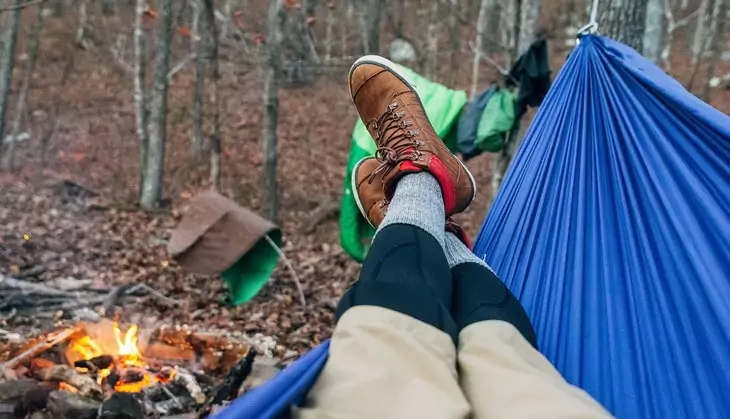
And when storing items, the hammock may not be a good tool. You have to attach the rain tarp over it so that you can protect yourself from the downpour. For additional storage, you have to bring an extra backpack to hang it on the tree as well.
Safety Tips for Hammock Camping
Although we value hammock’s convenience over camping tents, it is also subjected to safety risks. You can get injured if not vigilantly setting it up. Some of the safety tips include the following:
- The suspension must be sturdy. The cord and the webbing, usually come with the breaking strength or working load prescribed. On average, the lowest is 700 lbs.
- The trees or the anchor points must also be strong. The trees with diameters of over 6 inches are the preferred ones to withstand your weight. All the trees should preferably be of the same width. Moreover, beware of the old branches of the trees as they may all in times of strong winds to hurt you.
- Use the best knots when securing the hammock. Knots can add value in reducing the strength of the webbing and the cord.
- Do not lie diagonally on the hammock. Rather lie across it.
As for care instructions, you can follow the manufacturer’s instructions because the fabrics of these hammocks do differ.
Are straps your thing? See our reviews on the best hammock straps in a previous article – definitely a necessary-read for you.
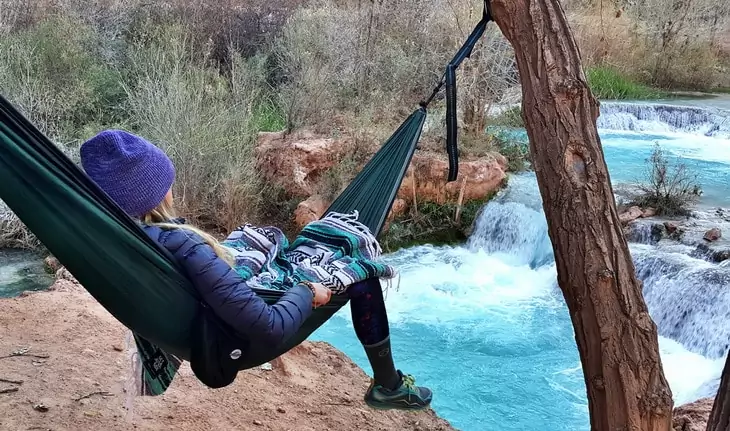
In winter times, you can bring the specific sleeping pad and use with the hammock. For summer camping, hammock needs no additional gear.
Final Thoughts
We have come to the end of our review of the best knots needed for a hammock. We have highlighted how to setup and tie the hammock on a tree, and have also discussed the safety tips. You should be ready to purchase it for your next trip. Hammocks are growing in popularity due to their convenience and comfort in camping than tents do.
For full guidelines and tips on knotcrafting, see our previous article on the topic to be one informed camper.
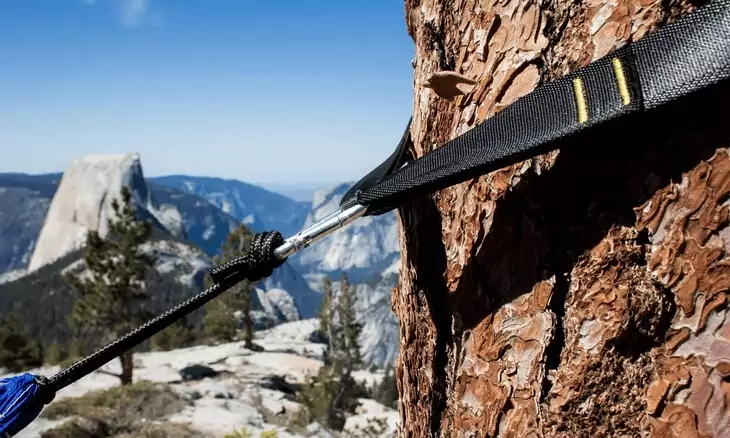
If you have any thoughts or experience you want to share with our readers, feel free to leave a comment in the comments section below. Thanks for reading!

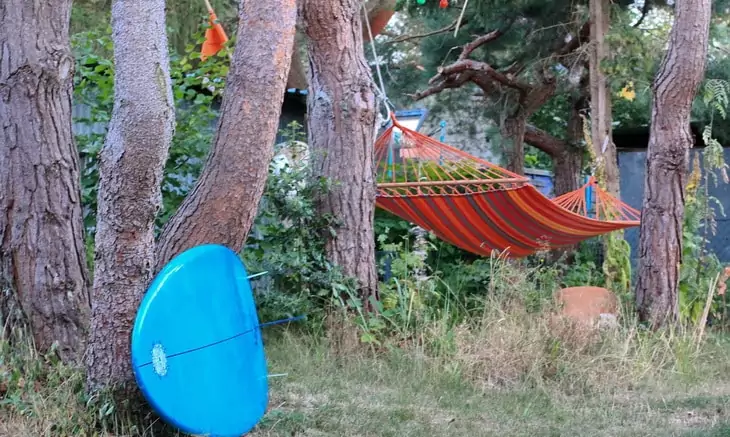
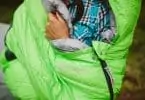





This is a really useful guide to some great knots. I love that there’s some discussion of where they come from and what each knot has been used for. The pictures really make this guide better than others I’ve found. I’m printing this off for the next time I take my hammock out.
I have a weird fear of hammocks, I imagine that the ropes will break as soon as I sit down. It feels better being able to see these pictures and instructions for the best knots but I’m still concerned. Does anyone have any tips for getting over this fear? I’d love to be able to lounge around in a hammock, they look so comfortable.
We are glad to help!
All you can do is face your fear! If you fall, then get back up!